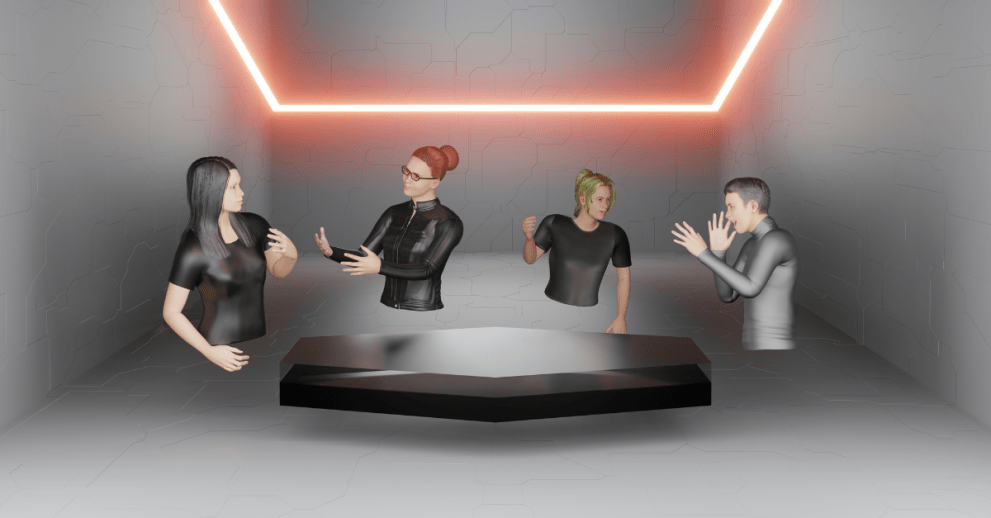In recent years we have seen an acceleration of organisations migrate to the cloud, whether that’s databases, services or applications. We have also seen a shift in the ways of working, employees’ expectations and the security threat landscape.
Keeping up to date with the latest and greatest trends is important to help ensure your organisation is operating in the smartest and safest ways. Discover our top 5 cloud trends for 2023.
Meetings in “reality”
With many organisations shifting to a flexible and remote working ethos, we have seen Microsoft Teams and Zoom become an integral part of our day to day working lives.
Virtual meetings and events are here to stay but are augmented reality (AR) and virtual reality (VR) the next big thing? In 2023 we think meetings in the metaverse will take off. Virtual reality technology can stimulate a three-dimensional environment, mimicking real-world experiences but in a virtual world.
Instead of hosting an event where attendees have to travel far and wide, the use of AR and VR will enable you to create an in person experience and sense of togetherness but in a virtual setting. Much like your typical virtual event, you’ll benefit from cutting venue and travel costs but with VR and AR you’ll also take connection and collaboration “virtually” to the next level, enhancing user experience.

DaaS(desktop as a service) replacement of legacy Citrix and Remote desktop farms – per machine licensing model
DaaS (Desktop as a Service) is a cloud-based service that provides remote access to virtual desktop machines. This technology has been gaining popularity as an alternative to traditional desktop solutions, such as Citrix and Microsoft remote desktop farms, because of its benefits in terms of cost-effectiveness, scalability, security, and reliability. The per-machine licensing model that is often used with DaaS allows organisations to pay only for the number of desktop machines they use, rather than paying a flat fee for access to a shared pool of resources.
As Microsoft partners, we use a Microsoft DaaS solution called Windows 365. Windows 365 is a cloud-based desktop solution that provides organisations with access to virtual desktops running the latest version of Windows 10. This solution is an example of Desktop as a Service (DaaS) and offers many benefits such as cost-effectiveness, scalability, security, and reliability. With a per-machine licensing model, organisations can reduce their IT costs and only pay for what they use.
Windows 365 also provides organisations with the added benefit of a widely used and supported operating system. This DaaS solution offers improved scalability, allowing organisations to quickly and easily add or remove desktop machines as their needs change.
In terms of security, Windows 365 provides increased protection against data breaches and improved data recovery in case of a disaster. With a guarantee of availability through service level agreements, organisations can rely on their virtual desktop machines to be always available and functioning correctly. Overall, Windows 365 provides organisations with a modern, flexible and secure desktop solution.
Multi-cloud approach
A multi-cloud approach is when you diversify your cloud services across a number of cloud providers. In 2023 we think businesses will adopt this approach due to the flexibility it offers.
Building applications and processes solely around one cloud platform can present issues and may not be the most effective. Which is why adopting multiple cloud platforms might be favoured as you have the control to select the best tools from the best cloud providers.
Using more than one cloud provider also helps in a disaster recovery situation as you would have the ability to keep replicas of your applications in separate clouds. Meaning that in the event that one provider goes down, you’ll still be able to operate “business as usual”.
Investment in cloud security and use of AI technology
We can expect to see continued growth of artificial intelligence (AI) and machine Learning (ML) cloud services during the next year. Moving to the cloud provides an array of benefits, but it also comes with different security threats and therefore different security measures to implement.
The use of AI technology can help with vulnerability identification and remediation across all cloud platforms due to its ability to spot threats and isolate them before any problems arise. With the current economic pressures organisations are facing, AI technology will be seen as an efficient and cost-effective solution which will help provide peace of mind.
Investing in cyber security and building resilience should always be on your to-do list as new threats are constantly evolving and can cause detrimental repercussions to businesses such as large fines, loss of revenue and damaged reputation.

Secure Access Service Edge
On the theme of security, another solution we expect to see a lot more of in 2023 is Secure Access Service Edge (SASE). SASE is a pretty cool technology that's making waves in the cyber security world. It's all about giving organisations secure access to their apps and data, no matter where their users are located or what devices they're using.
Instead of dealing with multiple security tools, SASE combines firewalls, VPNs, identity management, and security analytics into one easy-to-use platform. This means organisations can simplify their security set up, save some money, and make the whole experience better for their users.
Technology is continuously changing and improving and it’s only a matter of time that the next best, more collaborative and more efficient cloud solution becomes available. Not all cloud solutions will necessarily be useful to your organisation but understanding the current technology trends will help you keep ahead of the game because when it comes to tech, you can easily get left behind.




